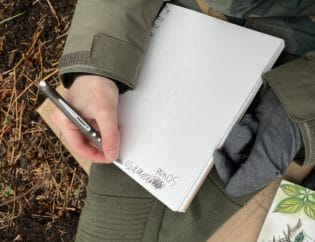
Your child can learn a lot about the natural world by watching clouds, an activity called cloud spotting. To go cloud spotting, all you have to do is find a comfortable spot to watch the clouds.
Your child can cloud spot from anywhere really but it would be ideal to help them choose a place where they will be comfortable, especially if they prefer to lie down when they gaze up. They'll see the most contrast and distinct shapes on a blue day with lots of clouds in the sky, but encourage them to head out anytime in any weather so they can make comparisons. If the sky is bright, remind them to wear sunglasses. Always remind them not to look directly at the sun as it can damage our eyes.

Once your child is settled in place, have them study the clouds above. Ask them to notice their shapes, especially noting how they change. They may want to use their imagination to pick out shapes and pictures in the clouds as they drift by. Ask them if the clouds look like anything familiar to them, perhaps people, animals, trees or other shapes.
Feel free to take along the downloadable Cloud Journal page we've designed so your child can make notes on the clouds that they see. Have them note the date, location and weather. Help them draw connections between the clouds and the weather outside.
This is an excellent time for your child to become familiar with the many types of clouds in our sky. Although there are over 100 types of clouds, they are most likely to see one of the most common clouds when cloud-watching. You can download our cloud ID resource and take it along with you.
Here are 4 common clouds your child might see when cloud watching:
Cirrus clouds are high-level clouds that are thin and wispy. They appear during good weather.
Nimbostratus clouds cover the sky in a dark gray layer. They can extend from the low and middle layers of the atmosphere and are thick enough to blot out the sun.
Cumulus clouds are rounded and puffy. They look like cotton puffs and tend to have a flattish bottom.
Stratus clouds are uniform and flat, producing a gray layer of cloud cover which may cause periods of light precipitation or drizzle.
In addition, these are great resources for identifying clouds:
Cloud-a-Day app from the Cloud Appreciation Society
Cloud spotting guide from the Met Office, the national meteorological service for the UK
Encourage your child to cloud spot for the next few days, few weeks or a few months! The sky is an ever-changing ephemeral masterpiece that will continue to fill them with awe.













